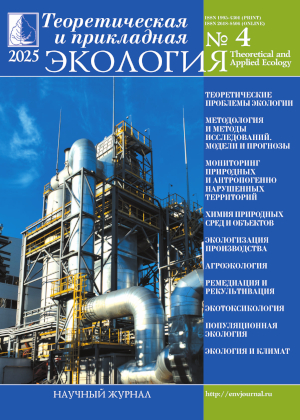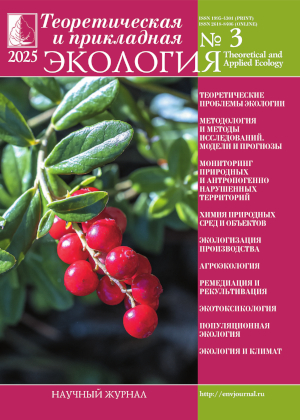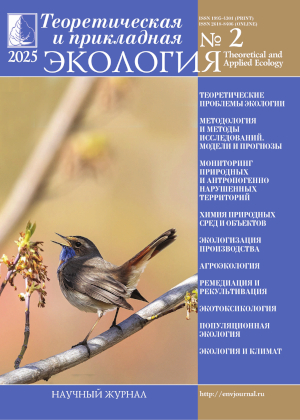 ISSN 1995-4301
ISSN 1995-4301(Print)
ISSN 2618-8406
(Online)
Online version of the journal
|
Sorption of heavy metals by melanin pigments of wood-destroying fungi |
||||
| N.V. Sushinskaya, V.P. Kurchenko | ||||
| Section: Chemistry of natural environments and objects |
||||
| The object of the study was the melanin pigments obtained from various types of wood-destroying fungi. Using the potentiometric titration lead acetate it was found that binding efficiency of Pb2+ decreases in the series of melanins from the Phellinus robustus (P. Karst.) Bourdotet Galzin; Phellinus igniarius (L.) Quel.; Fomitopsis pinicola (Sw.) P. Karst.; Ganoderma applanatum (Pers.) Pat.; Fomes fomentarius (L.) J.J. Kickx; Inonotus obliquus (Pers.:Fr.) - chaga and varies from 0.170 to 0.103 mg Pb2+ / 1 mg melanin. The interaction of the studied melanins with Pb2+, Cd2+, Cu2+, Zn2+ ions in the equivalence point leads to aggregation of the complexes and their deposition in the sediment. Aggregated chelate complexes of Cu2+ ions; Pb2+; Cd2+; Zn2+ with chaga melanin dissolves in the presence the chelating agent EDTA. Moreover, EDTA concentration necessary for dissolving the above complexes decreases from 4,5 • 10-4 to 1,8 • 10-4 mol / L. According to thermogravimetry the activation energy of the Pb2+ melanin complex was 357 kJ/mol. Their mechanical mixture had the activation energy of 80–82 kJ/mol, which indicates stabilization of this chelate complex. It was shown that molecule of melanin from chaga contains 25 binding sites of various metals. The results of EPR spectroscopy of chelate complexes of melanins with Pb2+ led to an increase in the number of paramagnetic centers [PMC] from 1017 spin/g to 6.5 • 1018 spin/g, which indicates the participation of free radical monomers of the phenoxyl and benzosemiquinone nature of melanins in the interaction. In the process of intragastric administration to mice of copper chloride at a dose of 200 mg/kg (LD50) and melanin from chaga at a dose of 360 mg/kg of weight, animal survival increased by 100%, and with the introduction of cadmium chloride at a dose of 94 mg / kg (LD50) and melanin (1000 mg/kg) survival rate reached by 80%. The results of sorption of heavy metals create the prerequisites for practical use of melanins from wood-destroying fungi as enterosorbents. | ||||
| Keywords: wood-destroying fungi, melanin, heavy metals, complexation, toxicity |
||||
| Link | ||||
| Article published in number 4 for 2019 DOI: 10.25750/1995-4301-2019-4-083-087 |
||||
|
|
36, Moskovskya street, Kirov, 610000, Editorial Board "Theoretical and Applied Ecology." Phone/fax: (8332) 37-02-77 e-mail: envjournal@vyatsu.ru The journal was founded in 2007 |
||||||




 Select viewing options
Select viewing options